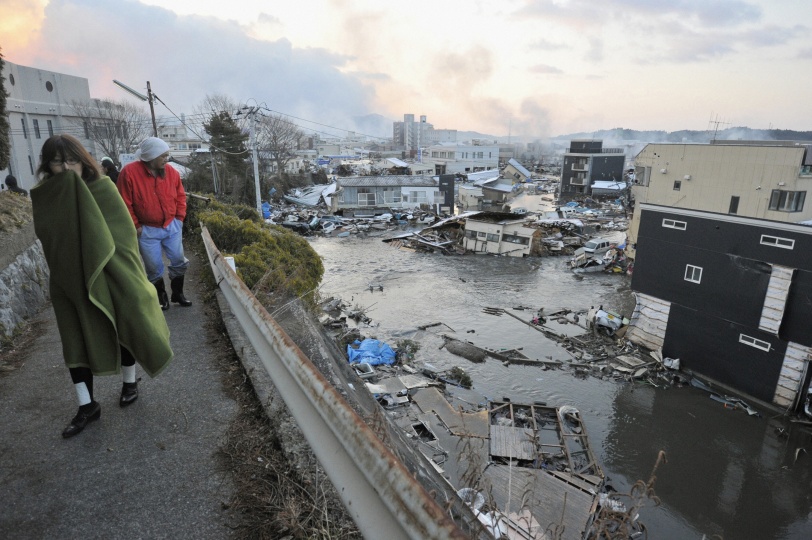A Seismic Jolt: Then the Grim Task Begins
No country is better prepared for earthquakes than Japan. But as the death toll rises from the massive quake and damaged nuclear plants bring more peril, journalists will play a key role in how people make sense of the disaster.

Along the north-east coast of Japan, rescue workers are beginning the grim task of searching for survivors from the largest recorded earthquake to hit the country. As of Sunday, more than 1,200 people were confirmed dead and officials expect that number to rise to at least 10,000.
No country is better prepared for earthquakes than Japan. Tokyo remains relatively unscathed, after the March 11 strike some 400 kilometres north-east of the capital that officials have now upgraded to 9.0 on the Richter scale. But the seismic jolt that flipped a 200 kilometre (124 miles)-long skirt of seabed two metres (six feet) higher did not just tear through roads and shake earthquake-proofed buildings, it brought to land unimaginable volumes of water, at a speed faster than any response could defend against.
Throughout Japan, and further afield in the Japanese diaspora, people with family members and friends in the affected areas are waiting to hear news. Having seen the first glimpses of the deluge shot from helicopters, they want to know how far the water reached: was there time to find safer spaces and areas above the incoming flood?
In a sense, two separate but inter-related natural disasters have hit Japan simultaneously, an earthquake – more accurately, a series of shocks and aftershocks – and a tsunami of colossal dimensions.
So far, both have produced quite different images.
Video images from quickly scrambled planes and helicopters of the oncoming waters made real houses and shops look like toys constructed from balsa wood.
The images of the quake striking inland have been more reassuring. Some of the first footage came from an office of the national broadcaster NHK. One sees a group of journalists steadying themselves against filing cabinets and office furniture that are swaying like the tops of trees.
As a viewer, it takes a while to realise that the only people who aren’t holding onto anything are the camera operators. Instinctively, they picked up their cameras and continued filming, despite experiencing a tremor that continued building for so long they they could not have been sure that it would not end in the destruction of the building.
Japan is a country that has procedures for dealing with such events. With obligatory earthquake awareness training from kindergarten age, a network of community disaster response groups and new methods of construction, it has learnt much from previous disasters, such as the 1995 Hanshin-Awaji Earthquake in Kobe, which left some 6,400 dead.
Technicians are currently battling to reduce pressure and radiation levels at four nuclear power plants in northern Japan. More than 200,000 people were being evacuated from the Fukushima area as of Sunday, as radiation levels continued to rise. Elsewhere, though, the fail-safe mechanisms of key public infrastructure seem to have largely initiated automatically.
The sense, emerging from the local media, is that most people are stoically adjusting themselves to the disruption and damage to property. Many have been stranded for the night in their offices, unable to use public transport until the train-carrying tunnels and bridges have been declared safe.
The key question, though, is what has happened in the north-east, along the coast in Fukushima and Miyagi, where the far more devastating surge of water struck, and from which so far the news has only been fragmentary.
As this is being written, local Japanese journalists and their international colleagues will have been making their way into the tsunami-affected areas.
For the people waiting to hear what has happened to their loved ones, getting news out from these isolated communities is a pressing necessity. In the days and months ahead journalists will also play a key role in how people make sense and recover from what is clearly going to be a major tragedy.

































































































